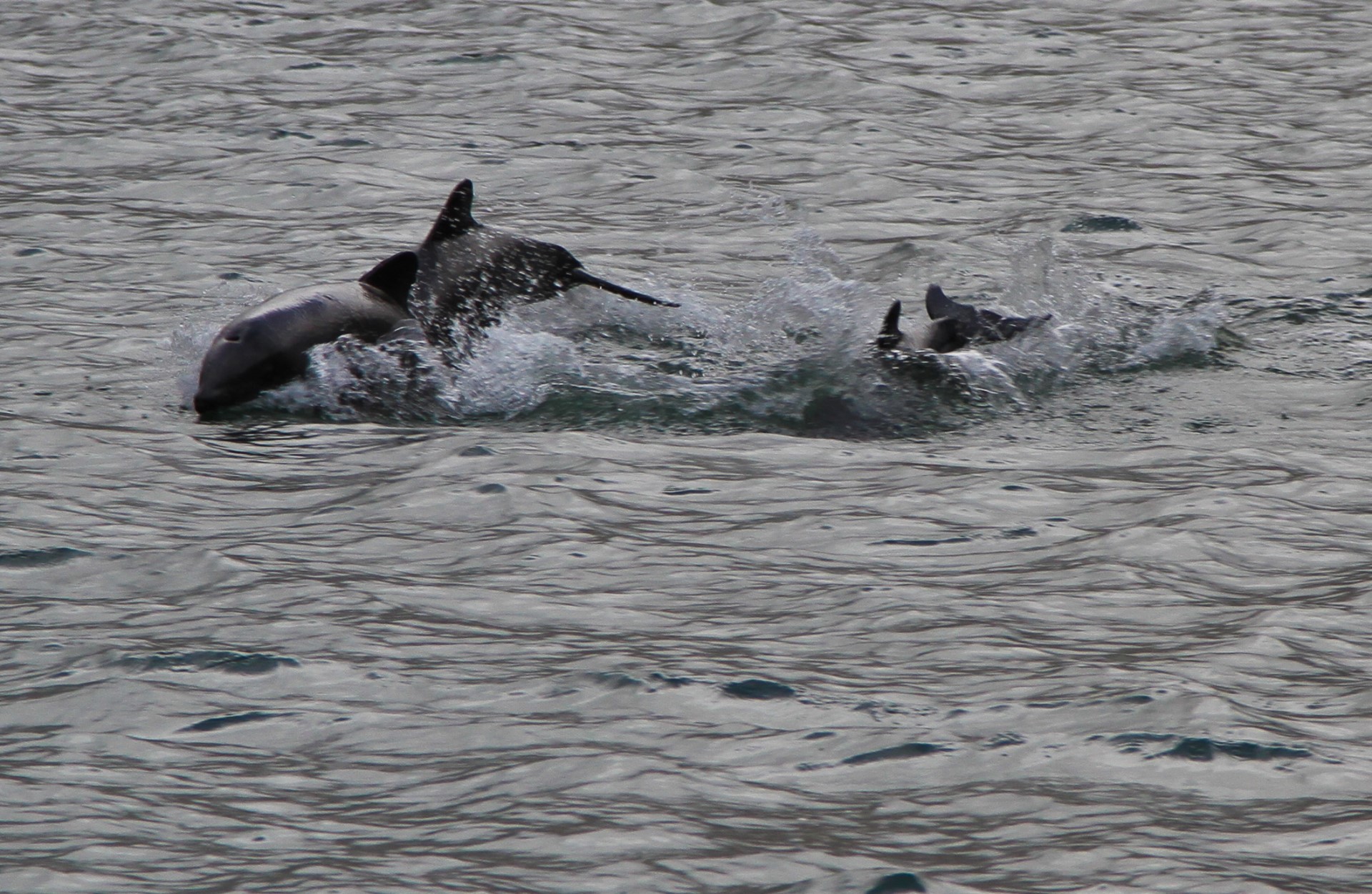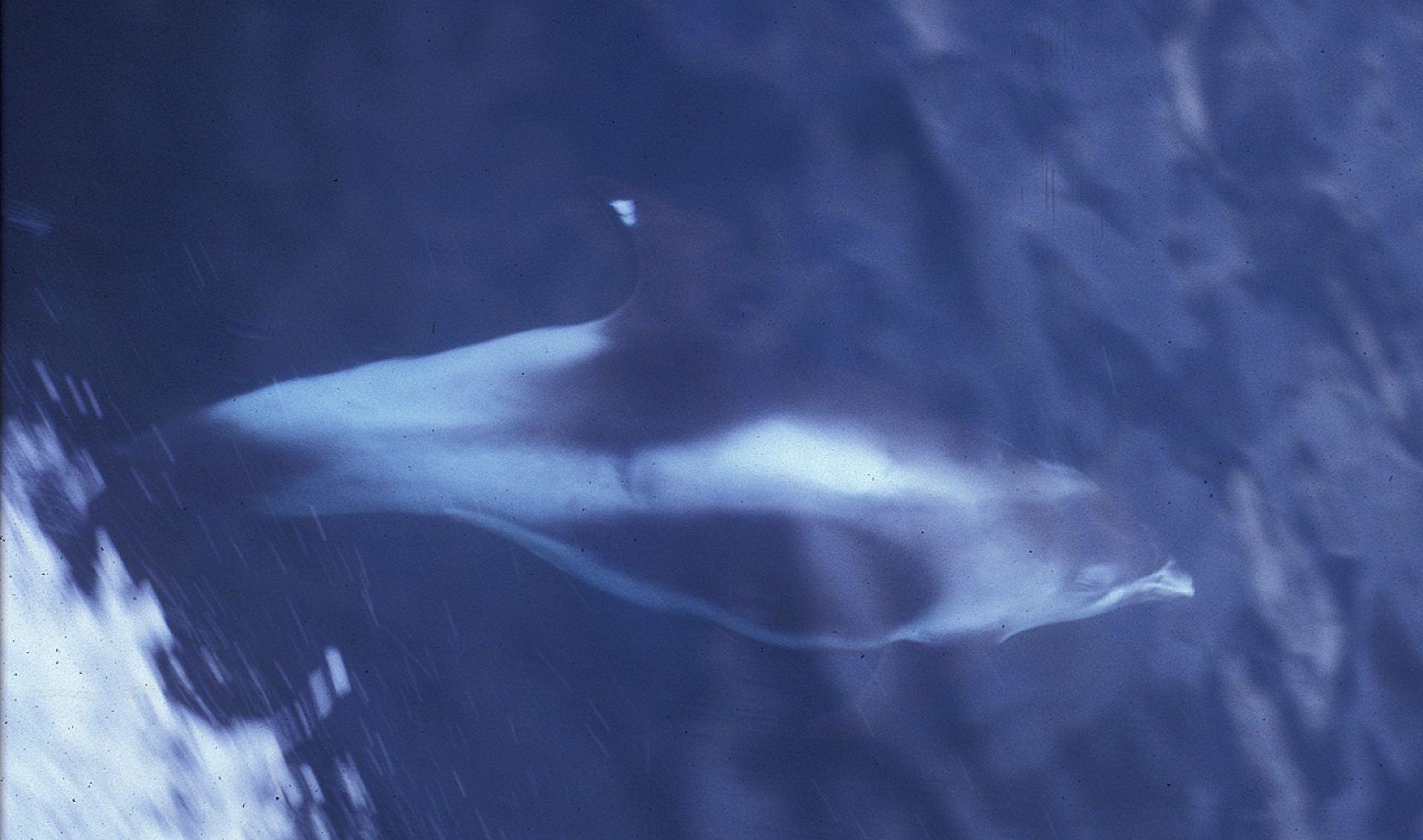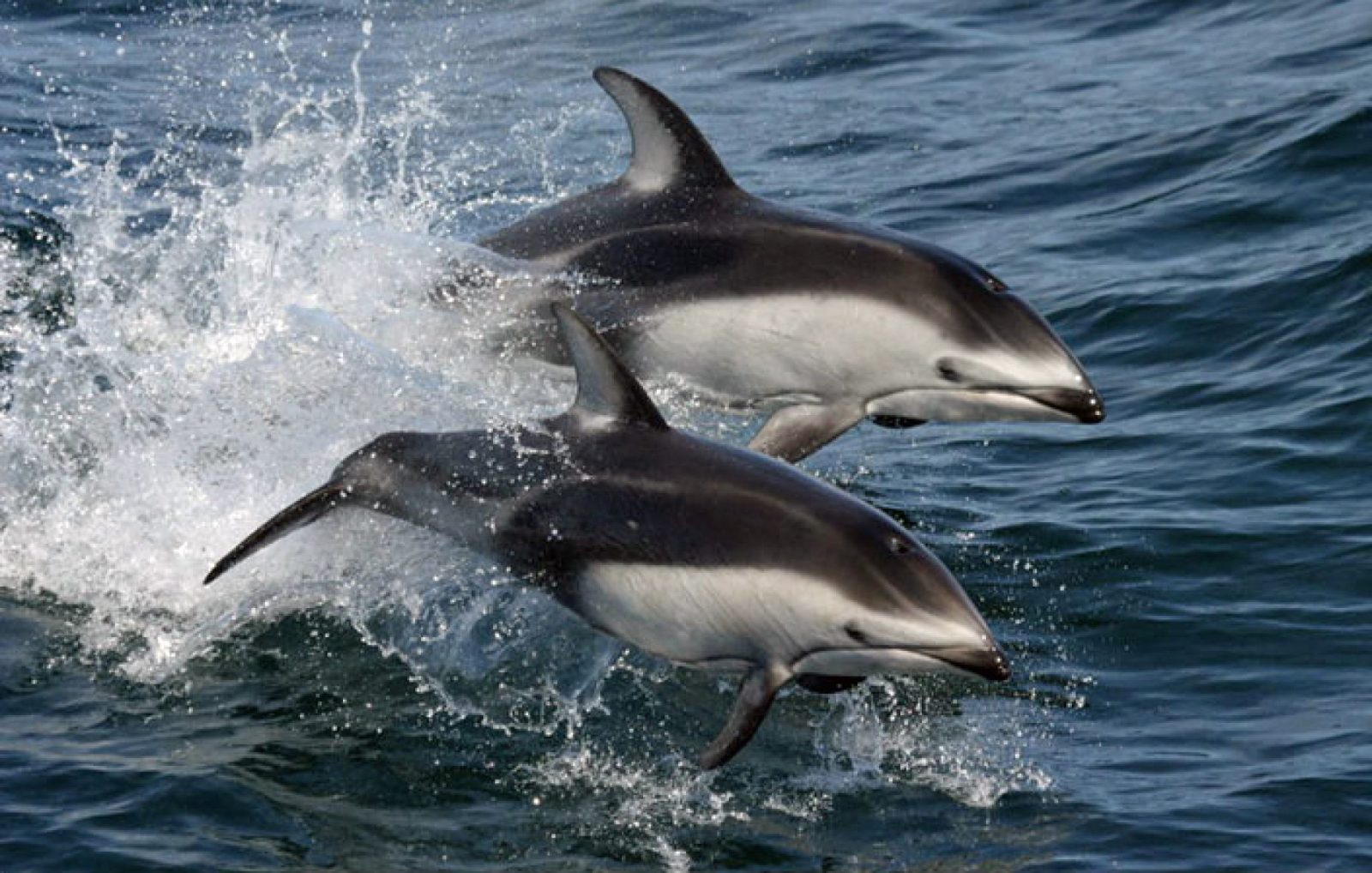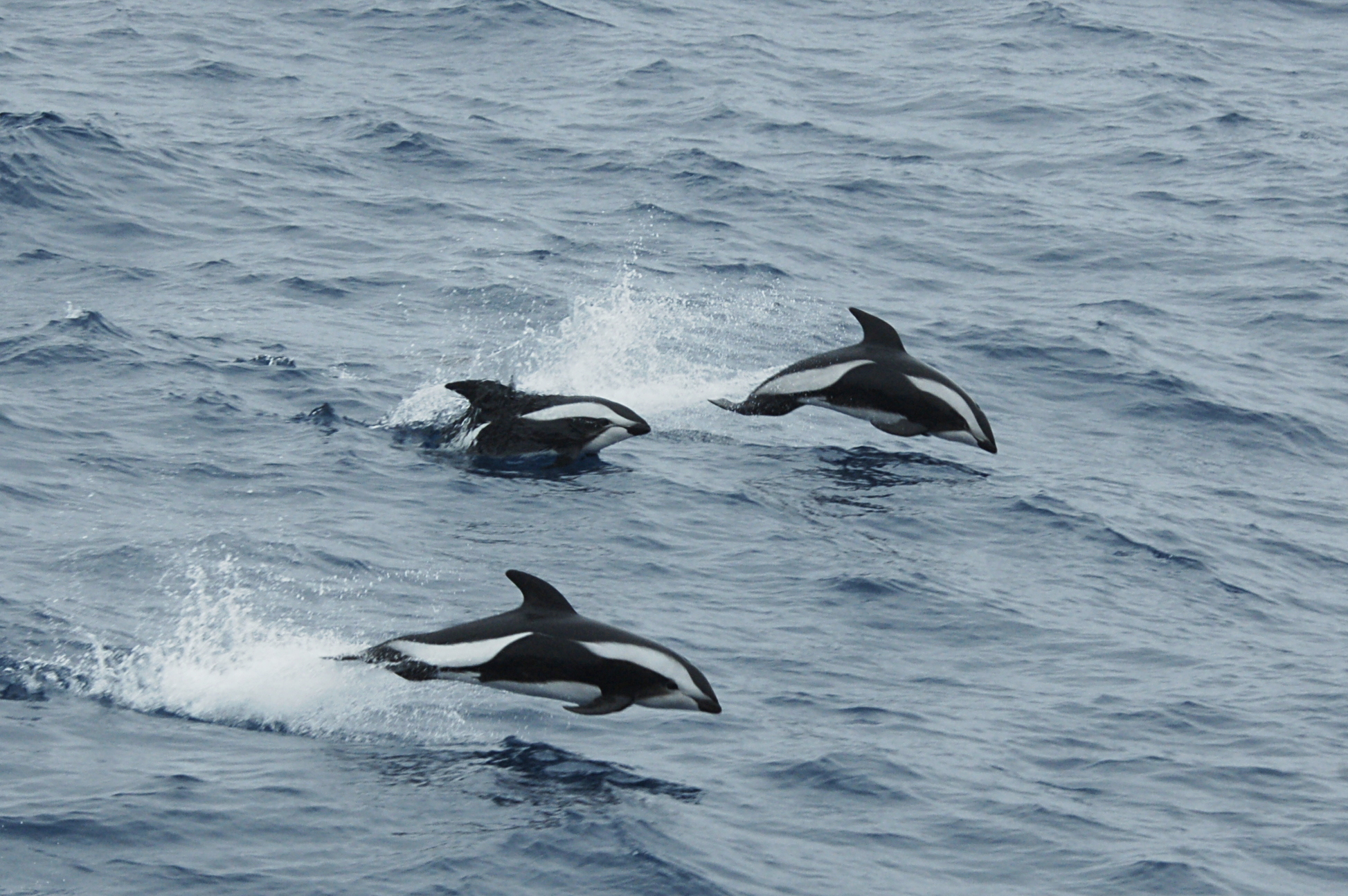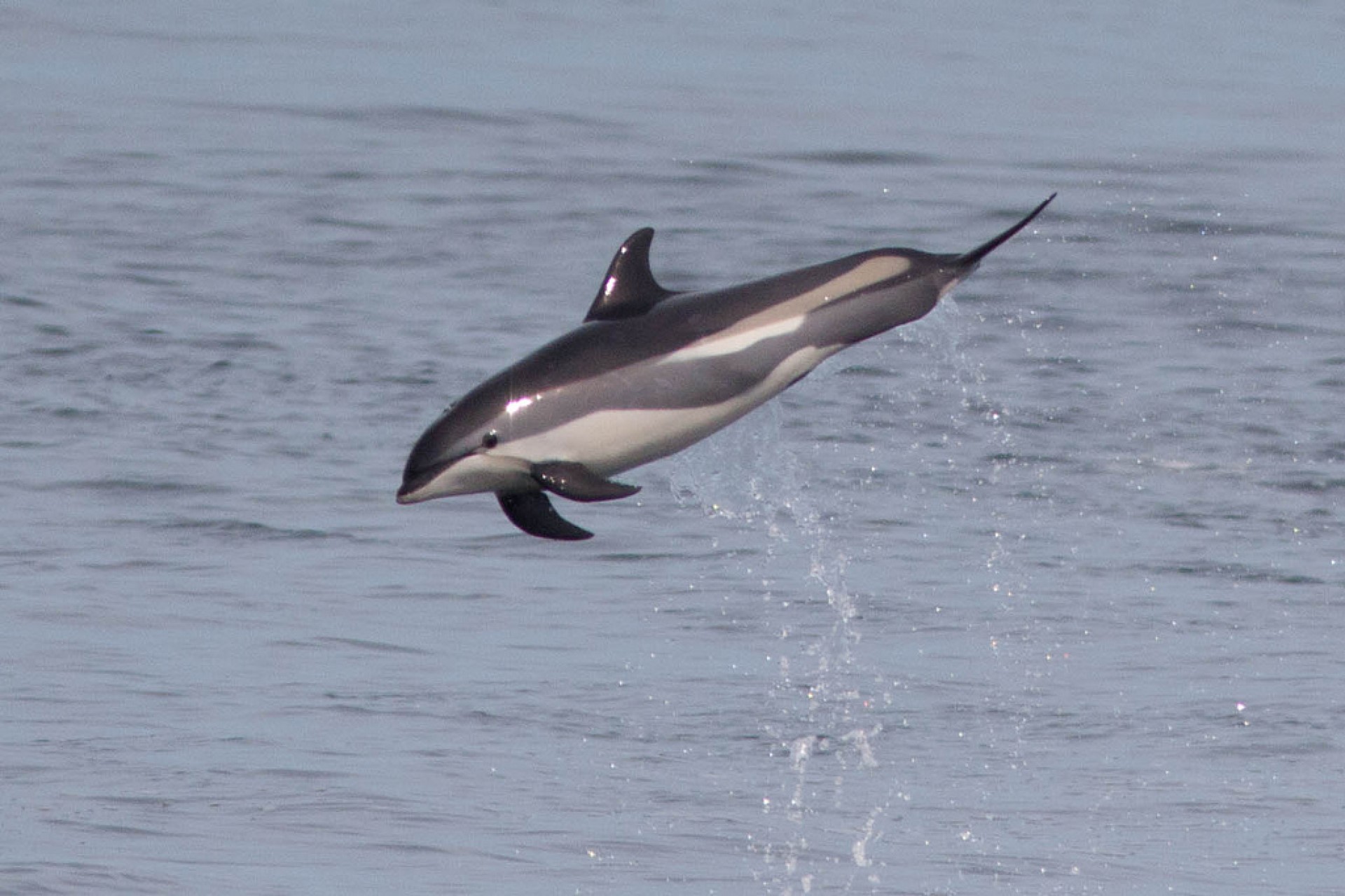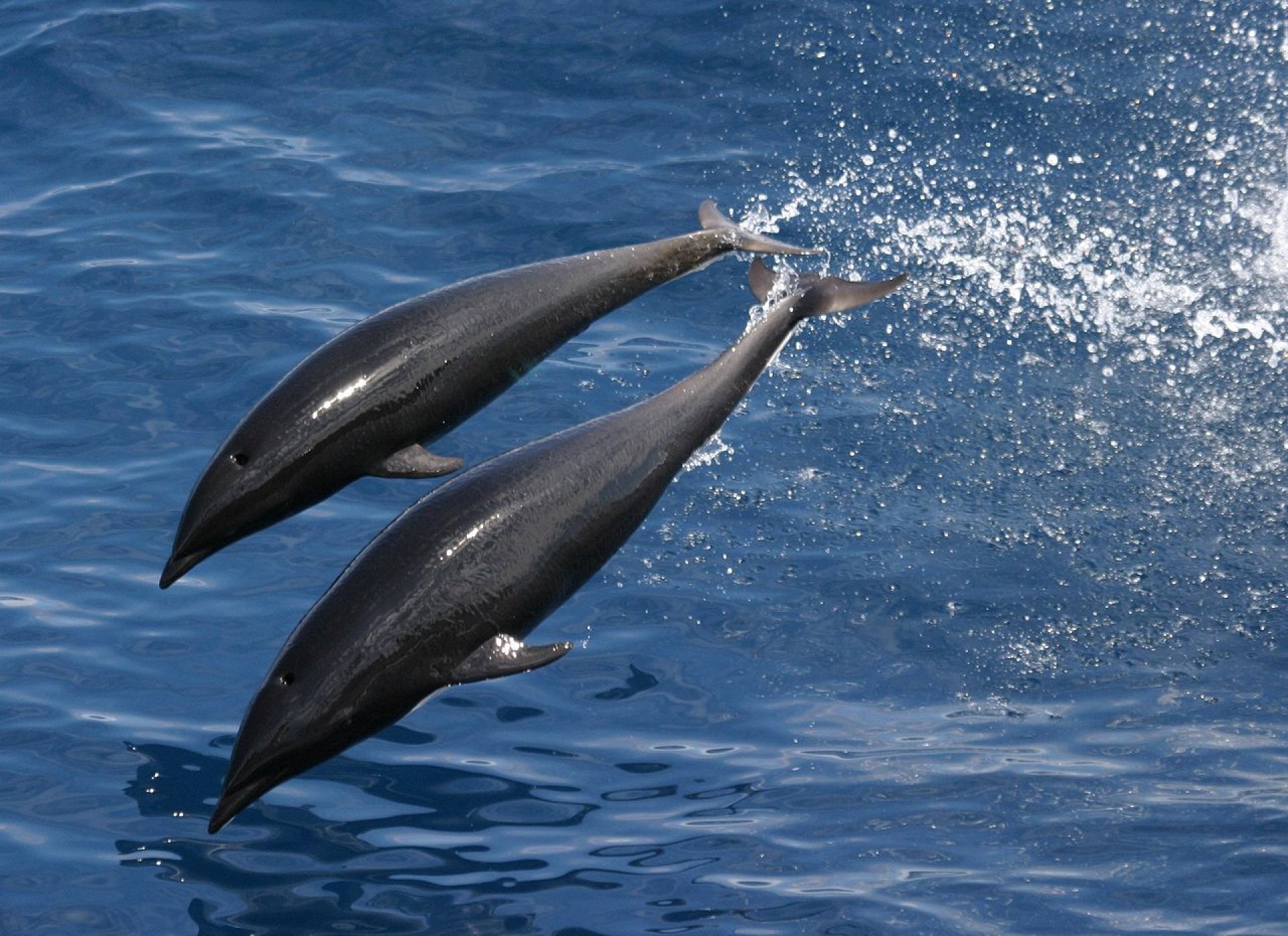
Northern rhight whale dolphin
The northern right whale dolphin is a small, slender species of cetacean found in the cold and temperate waters of the North Pacific Ocean. Lacking a dorsal fin, and appearing superficially porpoise-like, it is one of the two species of right whale dolphin.
Northern right whale dolphins are fast swimmers. Their average swimming speed is around 26 km/h (16 mph) but they can reach speeds of up to 30–40 km/h (19-25 mph).
When travelling fast, a group looks as though they are bouncing along on the water, as they make low, graceful leaps together, sometimes travelling as far as 7 m in one leap. They can dive up to 200 m (660 ft) deep in search of squid and fish, especially lanternfish. Additionally, also feeds on other prey items, such as Pacific hake, saury and mesopelagic fish.
It is estimated that a total of around 68,000 northern right whale dolphins inhabit the Pacific Ocean. Of those, around 26,000 (the geometric mean of their abundance estimates in US waters from 2008-2014) are placed into the California/ Oregon/ Washington stock for management purposes. Their minimum population estimate is around 18,600. Their abundances and distributions along the US coast do not only vary seasonally but also interannually, making the identification of population trends difficult.
Below is a list of any articles from this site, which mentions this species. Below that, is a video of the species in question. Below both of these we hope to add links which will help if you are looking to see this animal in the wild.

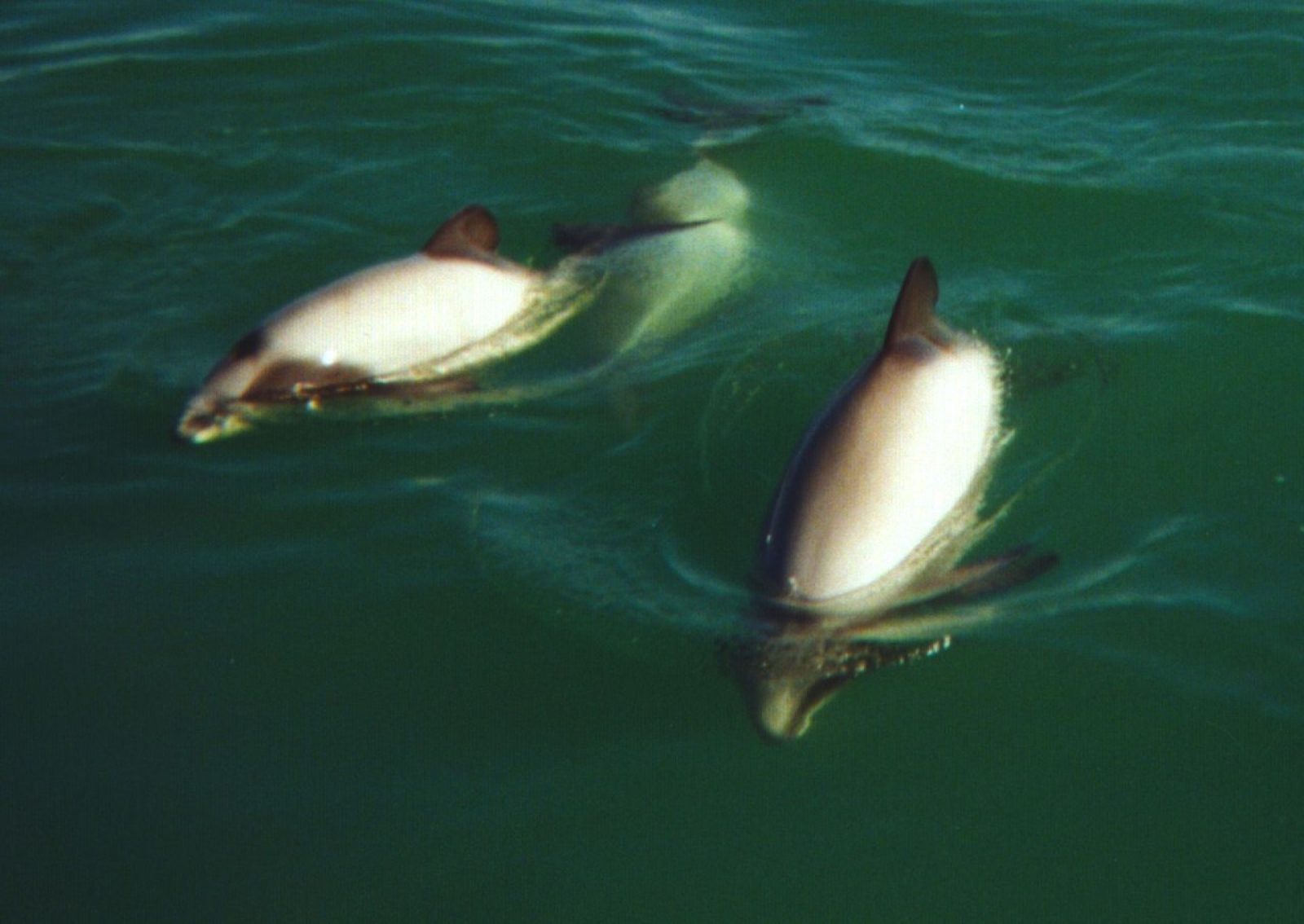

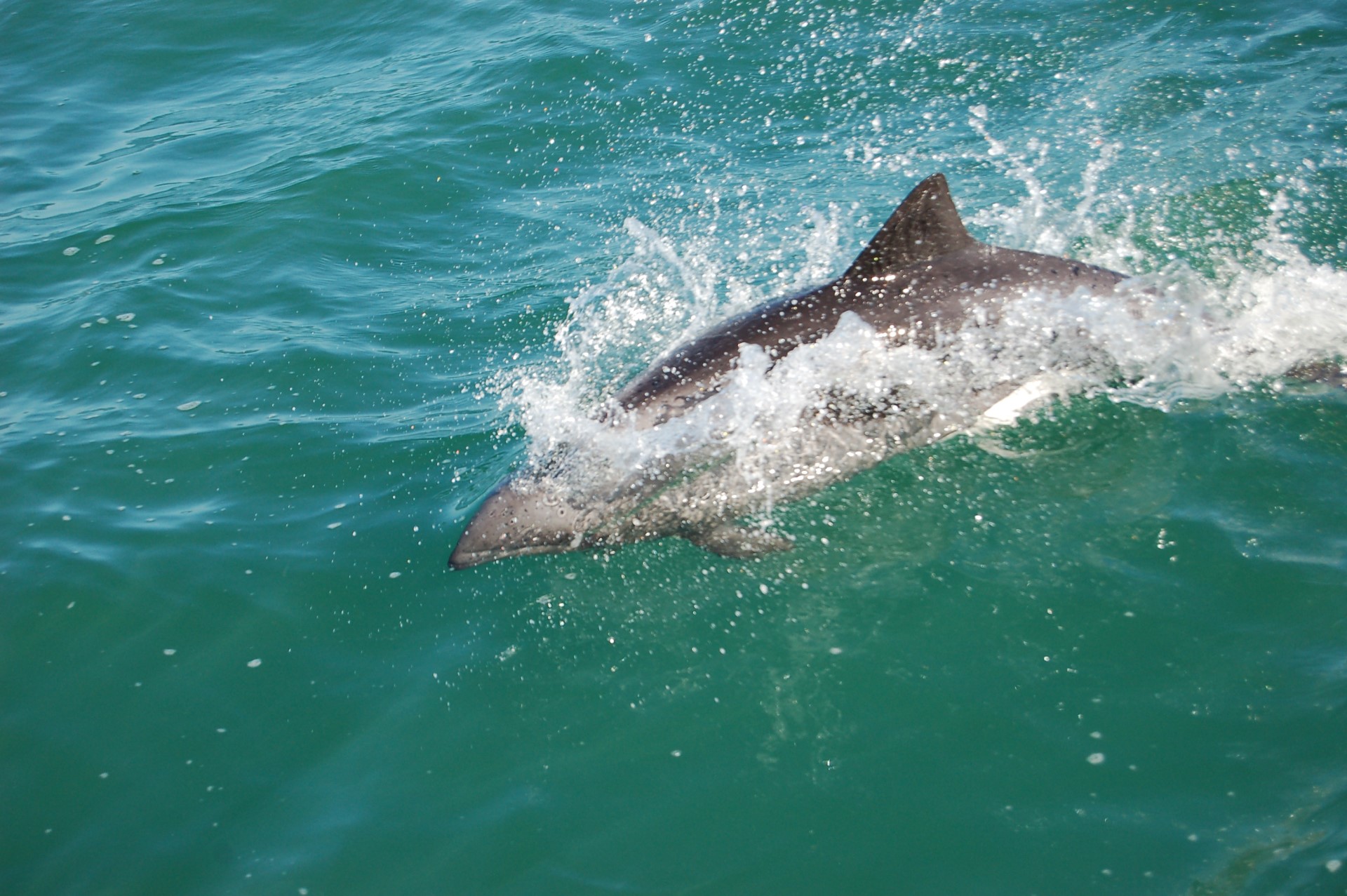
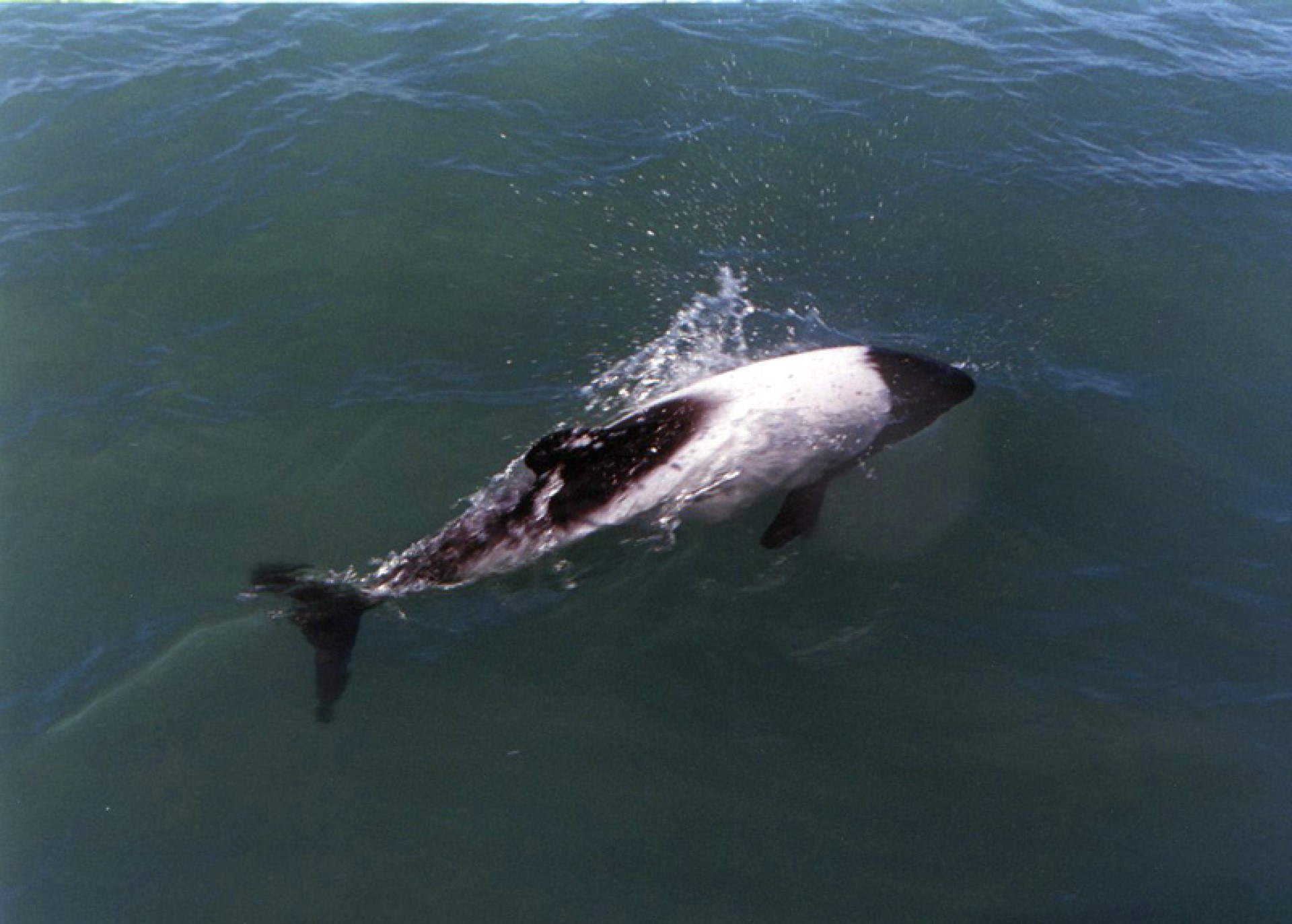
 Commerson’s dolphin (also known as jacobita, skunk dolphin, piebald dolphin, panda dolphin, or tonina overa (in South America), is a small oceanic dolphin of the genus Cephalorhynchus. The dolphin takes its name from the French naturalist Dr Philibert Commerson, who first described them in 1767 after sighting them in the Strait of Magellan. To the right of this is a map of the Primary subspecies, the secondary subspecies lives a large distance out into the Indian ocean.
Commerson’s dolphin (also known as jacobita, skunk dolphin, piebald dolphin, panda dolphin, or tonina overa (in South America), is a small oceanic dolphin of the genus Cephalorhynchus. The dolphin takes its name from the French naturalist Dr Philibert Commerson, who first described them in 1767 after sighting them in the Strait of Magellan. To the right of this is a map of the Primary subspecies, the secondary subspecies lives a large distance out into the Indian ocean.